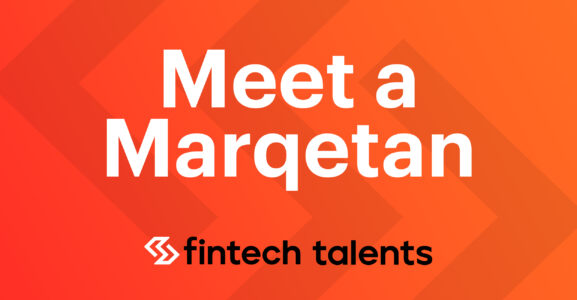October 31, 2022 | 5 min read
Embedded Finance: should we buy now and pay later?



Buy now, pay later is all about enabling consumers to shop on their terms while increasing sales for merchants. It’s one of the most successful examples of embedded lending in recent years. However, some have wondered whether this approach is creating an unhealthy consumer relationship with debt. With that in mind, should buy now, pay later innovators have more conversations with customers about their products and the potential risks associated with taking on credit?
At the upcoming Fintech Talents Festival, on the 14th and 15th November in London, panellists on this session will explore effective strategies that balance frictionless CX with adequate consumer protection and an understanding of complex financial products.
Marqeta’s Gary Hoban singled out this panel discussion as one to watch from so many panels across six stages!
Prior to joining the business, Gary was Senior Sales Executive at FIS Global with responsibility for Corporate New Business Sales in Europe. Additionally, Gary is experienced in delivering complex software implementation projects from his time as a consultant with EY. Today, he manages Marqeta’s emerging-fintech vertical, with a particular focus on buy now, pay later and cryptocurrencies. We asked Gary for his thoughts on buy now, pay later from a card innovation perspective. Here’s what he had to say.
Where do you stand on buy now, pay later as a financial product?
With improving regulation, visibility of late fees and zero interest for customers, buy now, pay later could prove to be an asset for consumers during the current cost of living crisis. In fact, that is already looking to be the case, as according to Credit Karma research, buy now, pay later has been a “lifeline” for many service users.
Have you used buy now, pay later products?
Yes, absolutely. Buy now, pay later is a fantastic cashflow tool that can help people to manage large one off purchases. I recently purchased a new iPhone and at the checkout split the payment over a year with 12 monthly interest free payments.
What new innovations are you seeing in buy now, pay later among prospects?
We’re seeing buy now, pay later debit cards really driving “top of wallet” offerings, with many innovators providing physical debit cards. These products give customers the convenience of leveraging buy now, pay later for any purchase regardless of merchant, or paying upfront via a link to their bank account.
Additionally, we’re seeing compelling reward programmes that not only feature real-time notifications supported by modern card issuing partners, but which also enable targeted rewards based on a customer’s unique preferences.
What advantages do you think card-enabled buy now, pay later solutions offer over A2A or QR code approaches?
Many buy now, pay later providers are perhaps late to the party when it comes to cards.
Instead they use A2A payments initiated in store. This is a tedious process that requires customers to scan a barcode, input their card details and pay the first instalment immediately.
It also needs the merchant’s checkout staff to be trained, which can be a time consuming, expensive and challenging process. This can inveitably lead to a large customer drop off rate at checkout.
Using cards can help buy now, pay later helps enable providers to create unique customer experiences and eliminate friction, and ultimately drive greater sales execution, leading to increased revenue for merchants. Buy now, pay later also delivers greater transparency around late fees compared to traditional credit cards. With tokenized multi-use or disposable cards, customers are able to pay in store in instalments simply by adding a card to a digital wallet such as ApplePay, GooglePay, or SamsungPay, and make a contactless payment in the same way they would make a conventional credit card transaction.
Importantly, the merchant’s staff require no special training. Using a card removes the friction and operations complexity that buy now, pay later providers face in using A2A solutions.
What benefits do cards offer to online buy now, pay later purchases?
Customers can pay on merchants’ e-commerce sites in instalments with a virtual card, simply by adding their card details at checkout. In this instance, buy now, pay later providers can partner with merchants directly for payment processing. And whether it’s in-store or online, both scenarios ensure the merchant is paid in full at the point of purchase. The money for the merchant flows through their card network via their acquirer. This greatly reduces friction for the buyer and increases customer conversion rate. Ultimately, consumers are happier when they are given more control over their purchasing decisions.
Providing flexible payment systems and financing options is one way to empower your customers.
What else are you looking forward to at the FTT Festival?
I think it’s going to be really interesting to see what innovations are happening in the crypto world after what has been a challenging year. Digital currencies and assets are here to stay and I’m sure there will be an inspiring response from the industry to changes in the landscape. Our research has already shown consumer appetite for using tradeable gaming assets, NFTs and cryptocurrencies as collateral in a lending context, so I’m really keen to learn who is offering this and how they’re going about it.
